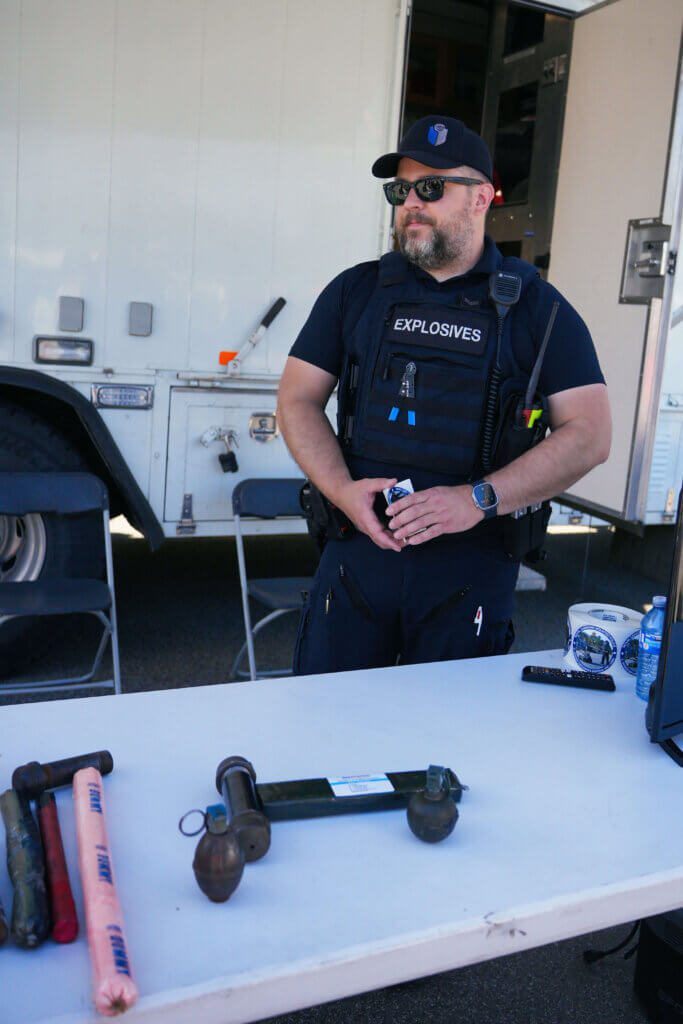Is the RCMP Part of the Military?

The Royal Canadian Mounted Police (RCMP) is one of Canada’s most iconic institutions, recognized globally for its distinctive red serge uniforms and broad-brimmed Stetson hats. The RCMP represents law enforcement across the nation, often referred to as a paramilitary organization due to its hierarchical structure and rigorous training. However, is the RCMP truly a part of the military? To answer this question comprehensively, we need to explore its history, structure, and role in Canadian society, comparing it to military organizations and examining its place in Canada’s law enforcement and defense framework.
The Historical Roots of the RCMP
Origins of the RCMP
The RCMP traces its origins to the North-West Mounted Police (NWMP), established in 1873 to maintain law and order in Canada’s western territories. The NWMP was modeled in part after military organizations, reflecting a structured chain of command and discipline. The initial purpose of the NWMP was to police the frontier, facilitate settlement, and assert Canadian sovereignty in the face of potential threats from Indigenous resistance, American expansion, and lawlessness in sparsely populated regions.
The NWMP evolved into the Royal North-West Mounted Police (RNWMP) in 1904 and later merged with the Dominion Police in 1920 to form the RCMP. From the outset, the RCMP’s structure and operational methods were influenced by military traditions, but its mandate was civilian in nature—focused on policing, not warfighting.
Military Associations During Historical Events
While the RCMP is not part of the Canadian Armed Forces, its history does include roles that intersect with military objectives. For instance:
- Boer War (1899–1902): Members of the NWMP volunteered to serve in the Boer War as part of Canadian military contingents, blending their policing expertise with military operations.
- World War I and World War II: During both world wars, the RCMP contributed personnel to Canada’s military efforts. Officers were seconded to the military, while others took on internal security roles, such as guarding infrastructure and monitoring potential espionage activities.
These examples highlight moments of cooperation between the RCMP and military forces but do not establish the RCMP as part of the military.
Comparing the RCMP and the Military

To determine whether the RCMP qualifies as a military organization, it is essential to evaluate its characteristics in comparison to military entities.
Mission and Mandate
The primary mission of the RCMP is to enforce Canadian laws, maintain peace and order, and protect citizens. It serves as both a federal police force and the contracted provincial/territorial police in many regions. Its mandate includes investigating crimes, providing community-based policing, countering organized crime, and addressing national security threats.
In contrast, the Canadian Armed Forces (CAF) have a distinct mission focused on national defense, including protecting Canadian sovereignty, engaging in combat operations, and participating in international peacekeeping missions. The military operates under the authority of the National Defence Act, while the RCMP functions under the RCMP Act and provincial policing agreements.
Structure and Hierarchy
Both the RCMP and the military share hierarchical structures with ranks, chains of command, and a focus on discipline. This similarity is a legacy of the RCMP’s paramilitary roots. However, the purposes of these hierarchies differ significantly:
- RCMP Ranks: While the RCMP uses military-style ranks such as constable, sergeant, and inspector, these titles denote roles within law enforcement, not combat leadership.
- Military Ranks: Military ranks are designed for operational command during wartime or missions, with officers trained for strategic, tactical, and logistical roles in combat scenarios.
The structural similarities stem from the need for order and efficiency but do not equate to the RCMP being a military force.
Training and Operations
The RCMP’s training program at the RCMP Depot Division in Regina emphasizes policing skills, legal knowledge, physical fitness, and firearms training. Cadets are prepared for diverse challenges in law enforcement, from routine patrols to handling complex investigations.
Military training, on the other hand, is tailored to preparing soldiers, sailors, and air personnel for combat and defense operations. It involves extensive physical conditioning, weapons systems proficiency, and strategies for military engagements.
While RCMP officers may occasionally engage in tactical operations through specialized units like the Emergency Response Team (ERT), their training and mission remain distinct from military operations.
The Legal and Organizational Framework
RCMP Act vs. National Defence Act
The RCMP operates under the RCMP Act, which outlines its duties, governance, and jurisdiction. The act defines the RCMP as a civilian law enforcement agency with a federal mandate, independent from the Canadian Armed Forces.
Conversely, the National Defence Act governs the military, placing it under the authority of the Department of National Defence (DND) and the Chief of the Defence Staff. The two organizations are separate in law, governance, and operational priorities.
Civilian Oversight
The RCMP is subject to civilian oversight mechanisms, including the Civilian Review and Complaints Commission for the RCMP (CRCC) and parliamentary committees. This ensures accountability in how the force interacts with the public and enforces laws.
The military, while accountable to civilian leadership through the Minister of National Defence and the Prime Minister, operates with a greater degree of autonomy in defense matters.
Deployment and Jurisdiction
RCMP officers are deployed across Canada and, in some cases, internationally to assist with peacekeeping, training, or security missions. However, these deployments are tied to policing objectives, such as training foreign police forces or participating in UN missions in a law enforcement capacity.
Military personnel, in contrast, are deployed to war zones, peacekeeping operations, and disaster response missions with a focus on defense and stabilization. The RCMP does not engage in combat roles or occupy war zones as the military does.
The Perception of the RCMP as a Paramilitary Force
The RCMP’s paramilitary characteristics, such as its uniforms, ranks, and ceremonial practices, often blur the line between civilian and military in public perception. The term “paramilitary” refers to organizations that adopt military-like structures and functions without being part of a nation’s armed forces. While the RCMP shares some traits with military organizations, it does not possess the defining attributes of a military force, such as combat readiness or a defense mandate.

Ceremonial Practices
The RCMP’s ceremonial duties, including its famous Musical Ride and participation in state events, reinforce its disciplined and regimented image. These traditions, while reminiscent of military pageantry, are symbolic and rooted in law enforcement, not military combat.
Specialized Units and National Security
The RCMP plays a critical role in national security, counterterrorism, and organized crime investigations. Units such as the Integrated National Security Enforcement Teams (INSETs) collaborate with the military and other agencies to address threats. However, the RCMP’s focus remains investigative and preventive, distinct from the military’s operational and combat responsibilities.
Collaboration Between the RCMP and the Military
The RCMP and the Canadian Armed Forces frequently collaborate on matters of national security, disaster response, and international missions. Examples include:
- Counterterrorism: The RCMP works closely with military intelligence and security agencies to prevent and respond to terrorism.
- Disaster Response: During natural disasters like floods and wildfires, the RCMP and military coordinate efforts to ensure public safety and support affected communities.
- International Missions: Both organizations contribute to international peacekeeping and capacity-building missions, with the RCMP providing policing expertise and the military focusing on security and stabilization.
This collaboration reflects complementary roles rather than overlapping mandates.
Conclusion: The RCMP as a Civilian Police Force
While the RCMP incorporates some paramilitary elements in its structure, training, and traditions, it is unequivocally a civilian law enforcement agency, not a military force. Its primary mission is to uphold the law, maintain peace, and protect Canadian citizens through policing. Unlike the military, the RCMP does not engage in combat, operate under defense legislation, or serve as a tool of national defense.
Understanding the distinction between the RCMP and the military is essential for appreciating the unique roles each plays in Canada’s security landscape. The RCMP’s blending of paramilitary attributes with civilian policing underscores its adaptability and effectiveness, but it remains firmly grounded in its mandate as a law enforcement institution.

